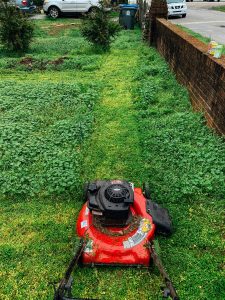Early Spring Lawn Care
Early spring is the time to think about the best way to help a winter-weary lawn recover and prepare for summer’s heat. Some simple steps now can help assure a healthy, thick, green lawn next summer.
- Clean Up. Clear away tree leaves, sticks and the litter that accumulates in the snow drifts over the winter. Rake away dead grass.
- Get a Soil Test. Lawn experts recommend testing the soil about every three years to determine how much and what kind of fertilizer your grass needs.
- Re-Seed or Re-Sod. You may find that winter weather has killed grass in some places. To patch a bare spot with seed, mix soil and seed together in a pail, spread the mixture on bare spot and step lightly on it. Spring is not the best time to establish an entirely new lawn because seedlings will have to compete with weeds, but you do want to stop erosion on any bare spots.
- Wait to Fertilize. Many homeowners rush to apply fertilizer early, expecting to give their grass a head start. But if you remembered to apply fertilizer last fall, you don’t need more in the spring. And late fall fertilization is better for the lawn than a spring application because it encourages root growth.
- Mow. When the grass is about three inches high, you can begin mowing. Leave the clippings on the lawn to recycle nutrients – it’s the equivalent of one free fertilizer application after two years. Never mow your lawn shorter than 2.5 inches. Higher lawns mean deeper roots, and longer grass blades shade the soil and discourage weeds.
- Avoid Weed Killers. If you have a lot of weeds in the lawn, there’s something wrong with the way you are growing your lawn. Shade, poor drainage, lack of nutrients, and compacted soils create weak lawns and healthy weeds. Rather than use chemicals, fix the real problems.
If crabgrass was a problem last year, it’s likely to be a problem this year unless you were able to thicken up the lawn last year. Many crabgrass preventers are available with active ingredients including pendimethalin, orzalin + benefin, prodiamine, and others. Follow all label directions to be sure the products are effective. All granule products must be watered-in to be effective. Crabgrass preventer should be applied before crabgrass germinates. Since crabgrass germination usually occurs shortly after Forsynthia bushes have finished blooming, apply the products when Forsynthia bushes are in bloom in your area.
Unless the lawn has several bare areas and is thin, wait until Memorial Day to fertilize. Too much fertilizer in the spring will cause the plants to make leaves instead of roots and without good roots, the lawn suffers more from summer drought. However, if the lawn is very thin, a dose of fertilizer will help it fill in and crowd out weeds.




